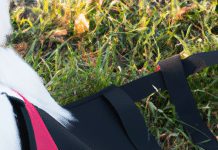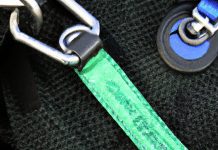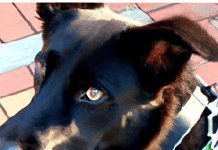When it comes to ensuring the safety and comfort of our four-legged friends, adjusting the fit of a harness is a crucial step. By making a few simple adjustments, we can ensure that our furry companions can move freely while also preventing any potential discomfort or chafing. In this article, we’ll explore some expert tips and guidelines on how to adjust the fit of a harness properly. So whether you’re a seasoned pet owner or a new one, join us as we unravel the secrets to achieving the perfect fit for your pet’s harness.
Identify the Correct Size
When it comes to fitting a harness for your dog, getting the correct size is crucial. An ill-fitting harness can cause discomfort and restrict your dog’s movements. To start, you need to measure your dog’s body accurately. Take a tape measure and measure around their neck and chest. Make sure to measure at the widest part of their chest. Once you have these measurements, refer to the harness size chart provided by the manufacturer. This chart will help you determine the appropriate size for your furry friend.
It’s also essential to consider your dog’s breed and body type when selecting the right size. Different breeds have different proportions, so you may need to size up or down accordingly. For example, if you have a French Bulldog or a Pug, they may require a size smaller than their neck measurement suggests because of their stocky build. Conversely, a Greyhound or a Dachshund may need a larger size to accommodate their long bodies. So, keep in mind your dog’s unique characteristics when choosing the size.
Checkpoints for Proper Fit
Now that you have the correct size harness in hand, it’s time to ensure the proper fit on your dog. There are several checkpoints you should pay attention to during the fitting process. These checkpoints include fitting around the neck, fitting around the chest, positioning of straps and buckles, and freedom of movement.
When fitting around the neck, ensure that you can comfortably fit two fingers between the harness and your dog’s neck. The harness should be snug but not constricting, allowing them to breathe freely. Moving down to the chest, you should be able to fit two to three fingers between the harness and your dog’s chest. This ensures a proper fit without being too tight or too loose.
Check the positioning of straps and buckles on the harness. They should be well-aligned and sit securely on your dog’s body. Adjust any loose straps to avoid any potential slipping or discomfort. Lastly, assess your dog’s freedom of movement. They should be able to walk, run, and play without any restrictions. If the harness appears to be restricting their natural movements, it may be necessary to readjust.
Adjusting the Neck Strap
After your initial fitting, you may need to make specific adjustments to the neck strap for a perfect fit. Begin by loosening the neck strap to create some room. Then, place the harness around your dog’s neck with the neck strap comfortably resting just above their shoulders. Ensure that the strap is not too tight or too loose.
Next, tighten the neck strap to achieve a snug fit. It should be secure enough that your dog cannot slip out of the harness, but not so tight that it causes any discomfort or restricts their breathing. As you tighten, make sure the strap lies flat against their neck and does not bunch up or dig into their skin. Always prioritize your dog’s comfort during this adjustment process.
Adjusting the Chest Strap
In addition to the neck strap, the chest strap is another crucial component of a well-fitted harness. To adjust the chest strap, start by loosening it slightly. Then, wrap the harness around your dog’s chest, making sure the chest strap sits just behind their front legs. The fit should be snug but not overly tight, allowing for proper range of motion.
Once the harness is in position, fasten and tighten the chest strap accordingly. It should be snug enough to prevent the harness from shifting, but not so tight that it causes discomfort or restricts your dog’s breathing. Take a moment to double-check the fit and ensure that your dog can move comfortably. If necessary, make any further adjustments to achieve the proper fit and range of motion.
Adjusting the Girth Strap
While many harnesses rely on both neck and chest straps, some designs include a girth strap that wraps around your dog’s body. To adjust the girth strap, locate it on the harness. Loosen and adjust the strap, so it can sit just behind your dog’s rib cage.
Reposition the girth strap for a snug fit. It should be tight enough that it won’t easily slip off your dog, but loose enough that it doesn’t cause any discomfort. Pay attention to the alignment of the strap and ensure it doesn’t rub against your dog’s skin. Check the comfort and range of movement once again to guarantee a well-fitted harness.
Proper Adjustments for Multiple Straps
If your dog’s harness incorporates both neck and chest straps, it’s essential to coordinate the adjustments for a balanced fit. Begin by loosening both the neck and chest straps before placing the harness on your dog. Once the harness is in position, tighten both straps simultaneously.
Ensure that the snugness is balanced between the neck and chest areas, providing an even fit overall. Avoid having one strap tighter than the other as it may cause discomfort or uneven pressure points on your dog’s body. Take the time to adjust individual strap tensions, if needed, to achieve a harmonized fit that facilitates your dog’s comfort and mobility.
Double-Checking the Fit
After making all the necessary adjustments, it’s important to double-check the fit of the harness. Take a moment to inspect your dog for any signs of discomfort. Watch out for excessive panting, irritation, or redness around the harness area, as these may indicate an ill-fitting harness.
Additionally, check for any looseness in the straps. If the harness can easily slip off or move around, it’s essential to readjust and secure it properly. Also, confirm that the harness aligns with your dog’s body structure, with the straps comfortably sitting along their neck, chest, and torso. A well-fitted harness should cater to your dog’s needs and ensure their comfort and safety during walks or other activities.
Considering Your Dog’s Comfort
While adjusting the fit of your dog’s harness, always prioritize their comfort. Avoid excessive tightness that may cause discomfort or restrict their movements. Remember, a harness should provide security and control without causing any unnecessary strain on your dog’s body.
Allow for space that accommodates your dog’s natural movements. They should be able to walk, sit, lie down, and stretch with ease while wearing the harness. Pay attention to areas where chafing or rubbing might occur, and readjust the straps if necessary. Remember to conduct frequent checks during walks or activities to ensure that the harness continues to provide optimal comfort for your furry friend.
Assistance for Difficult Dogs
If your dog is particularly difficult or uncooperative during the fitting process, there are a few strategies you can employ. Use treats and rewards as positive reinforcement to create a positive association with the harness. Offer treats and praise when they allow you to fit the harness on them successfully.
Practice patience and persistence, gradually building up their tolerance to wearing the harness. If you’re still experiencing difficulties, consider seeking assistance from a professional dog trainer. They can provide guidance and techniques to help your dog become more comfortable with wearing a harness and increase their cooperation during the fitting process.
Common Troubleshooting Issues
Even with the most carefully adjusted harness, there can be some common troubleshooting issues that you may encounter. One such issue is the harness slipping. If you notice the harness sliding off your dog’s body, it may require tightening or readjusting of the straps. Ensure that the harness fits securely and remains in place throughout any activity.
Another potential issue is the harness twisting. If the harness straps become twisted, it can cause discomfort or restrict your dog’s movements. Take the time to straighten and adjust the straps to their proper position, ensuring they are aligned with your dog’s body.
It’s also important to watch out for your dog’s paw getting caught in the harness. Make sure there are no loose straps or excess material that could potentially entangle their paws. Regularly inspect the harness for any signs of wear or damage that may pose a risk to your dog’s safety.
Lastly, difficulty breathing or signs of discomfort should never be ignored. If your dog is struggling to breathe or appears uncomfortable while wearing the harness, it’s crucial to reevaluate the fit and make necessary adjustments. Remember, the harness should enhance your dog’s comfort and mobility, not hinder it.
Adjusting the fit of a harness may take some time and experimentation, but once you find the right adjustments, you and your furry friend will be able to enjoy walks and activities together with comfort and confidence. By following these guidelines and considering your dog’s unique needs, you can ensure a harness that fits snugly, allowing for freedom of movement while keeping your dog safe and secure.






























